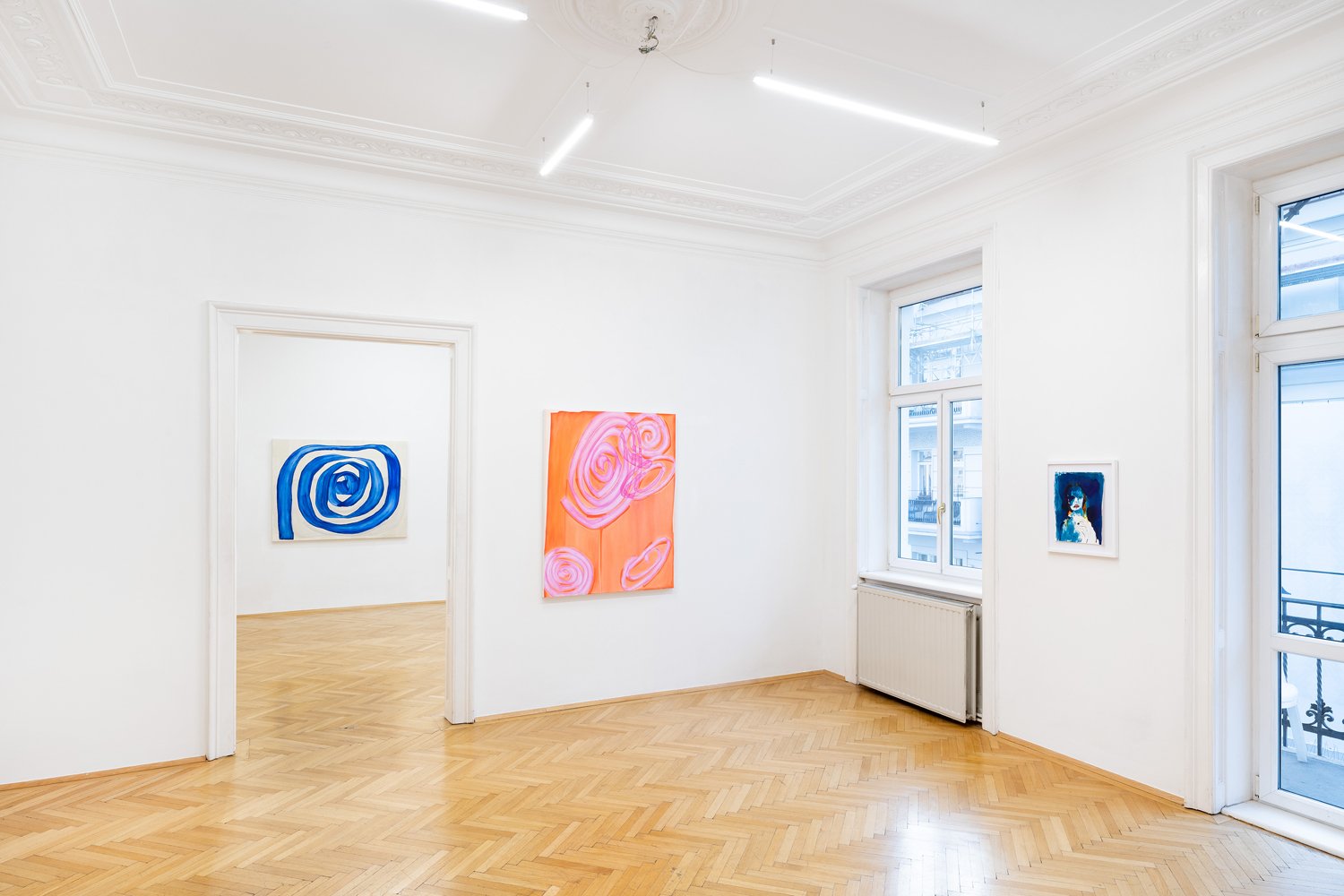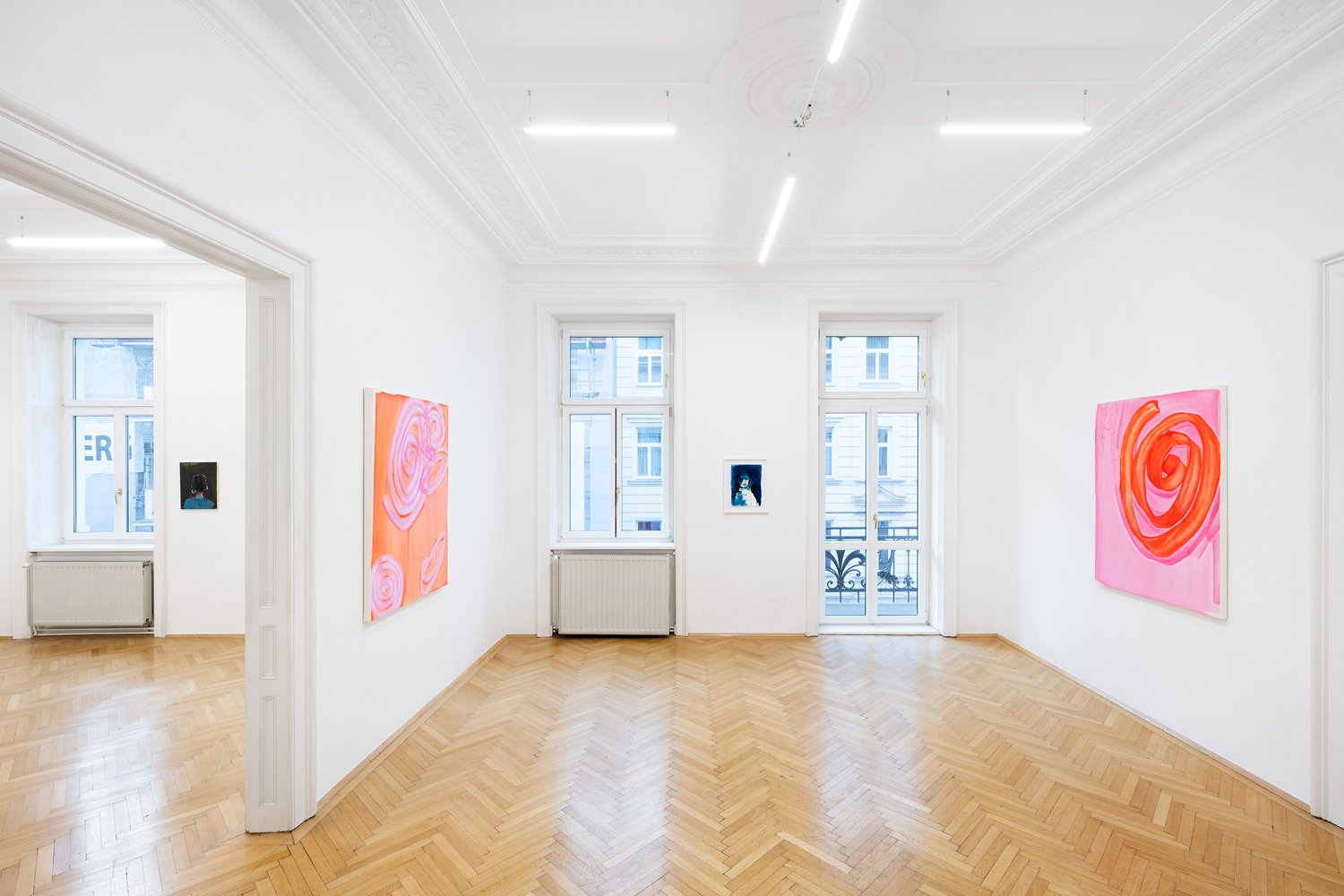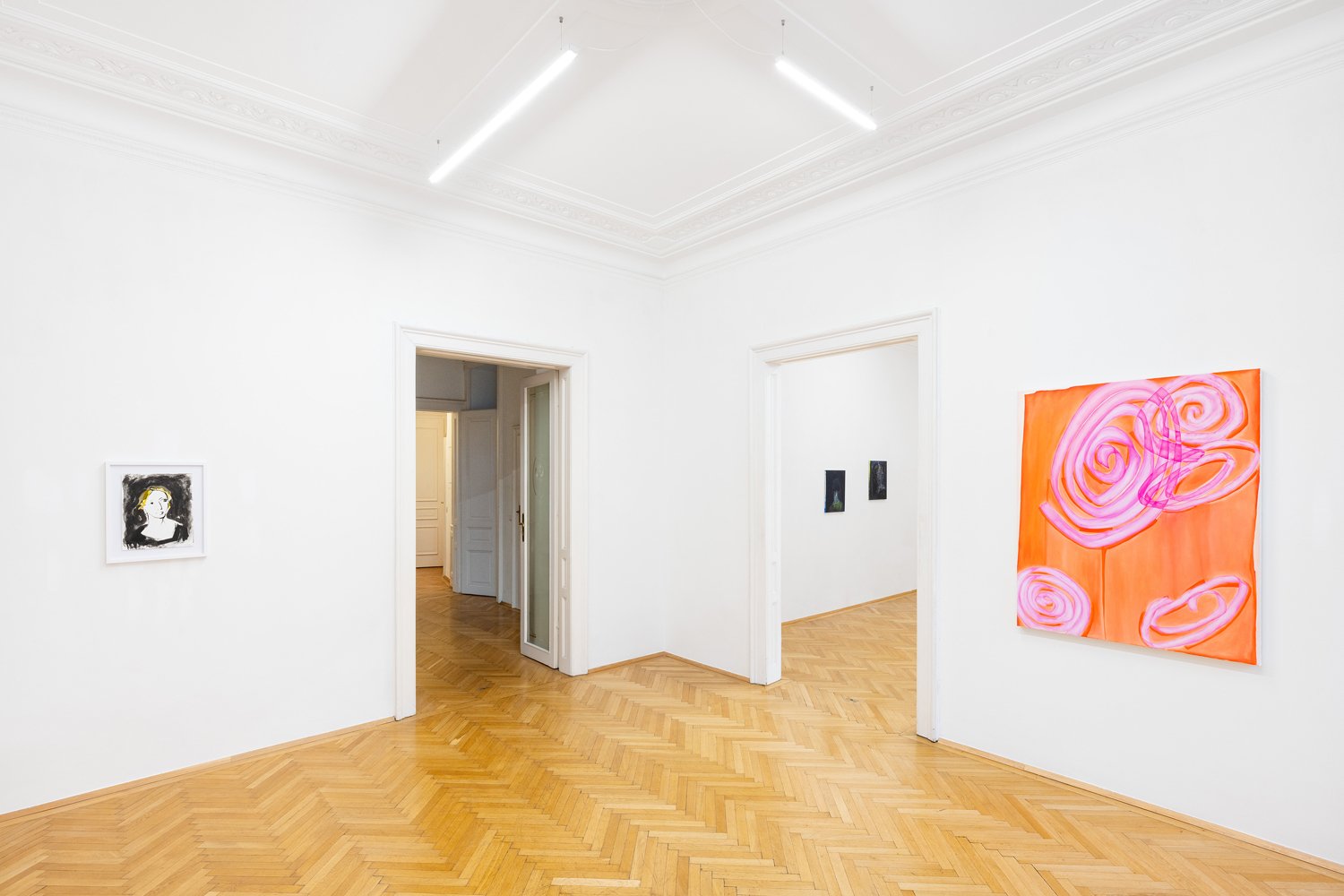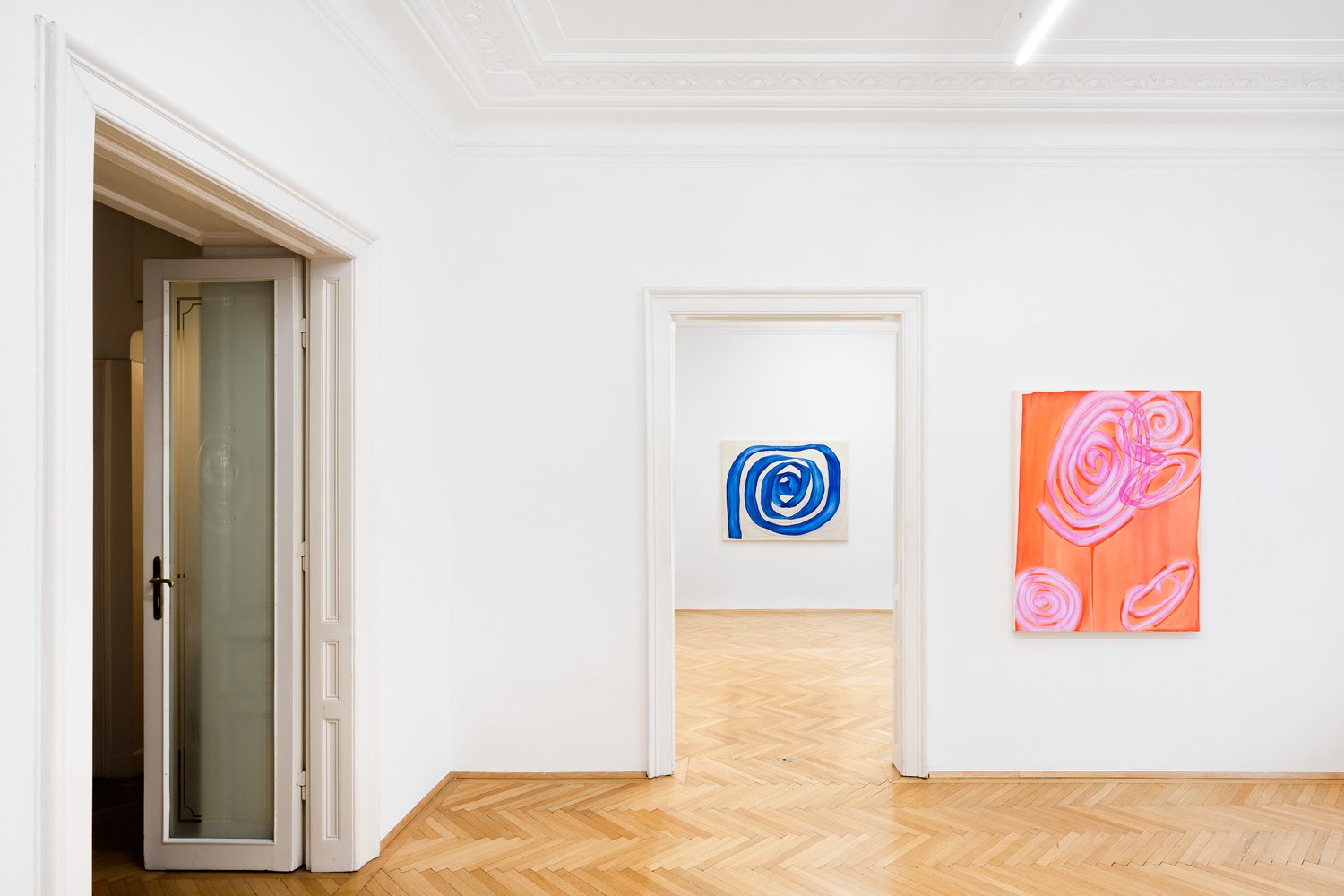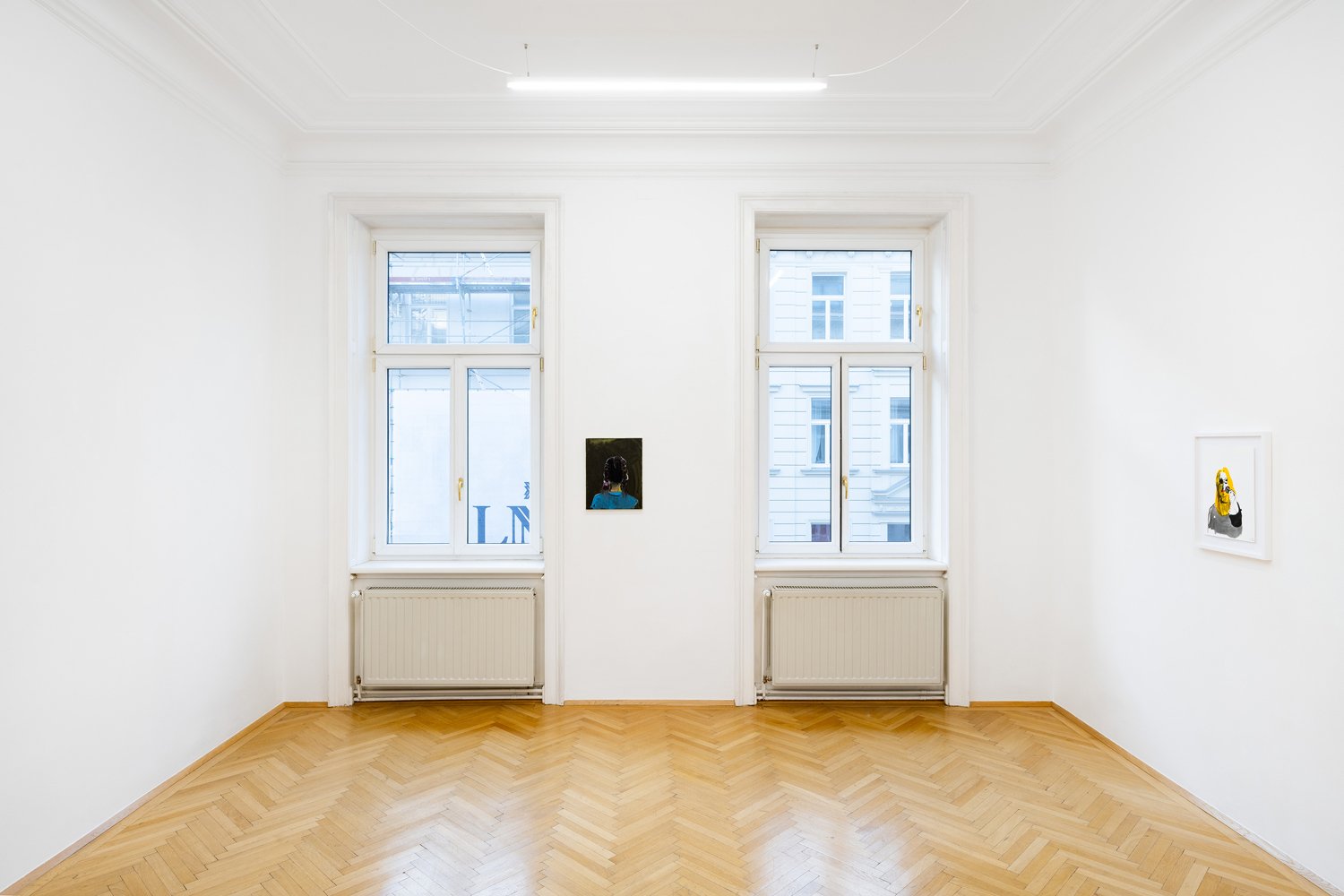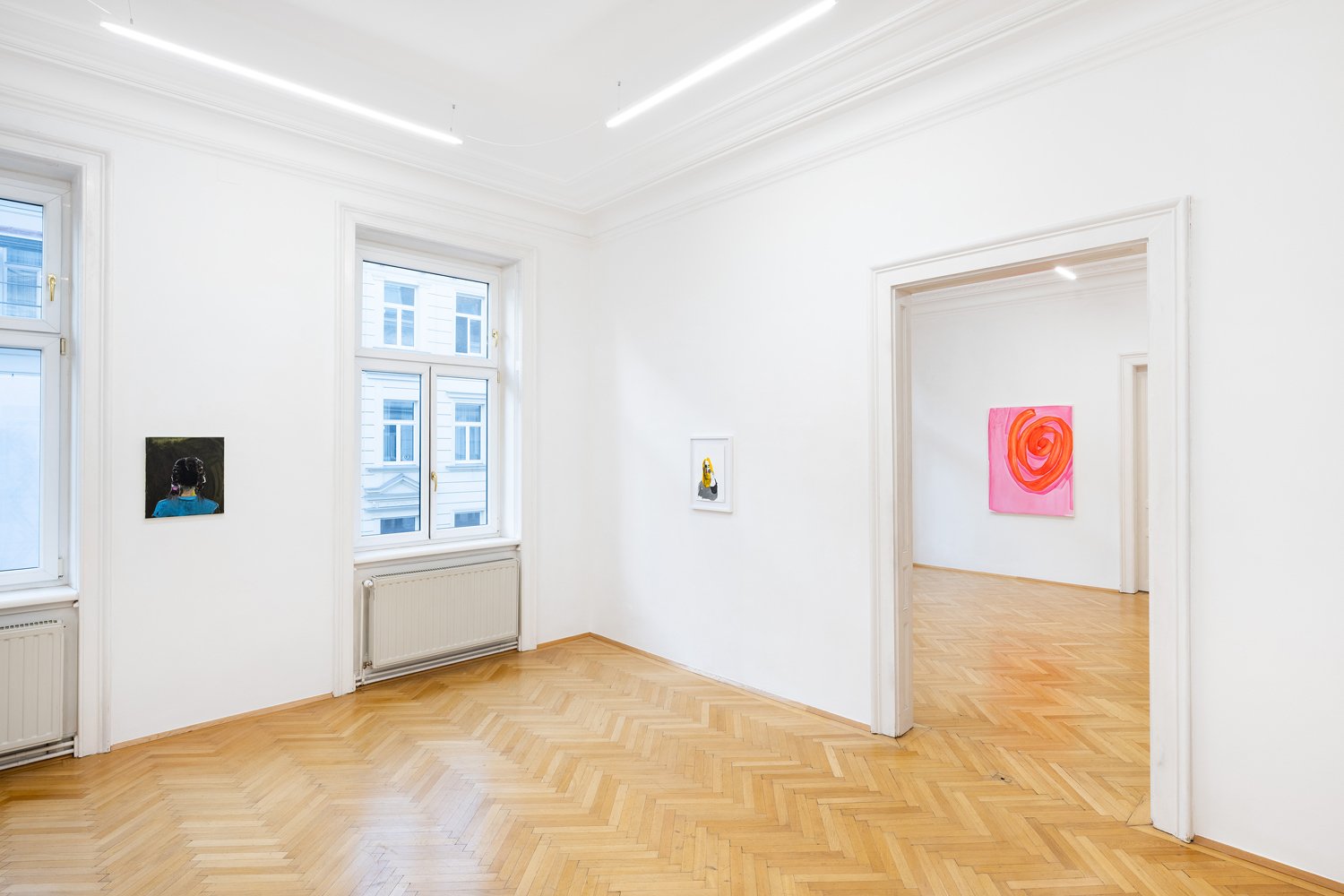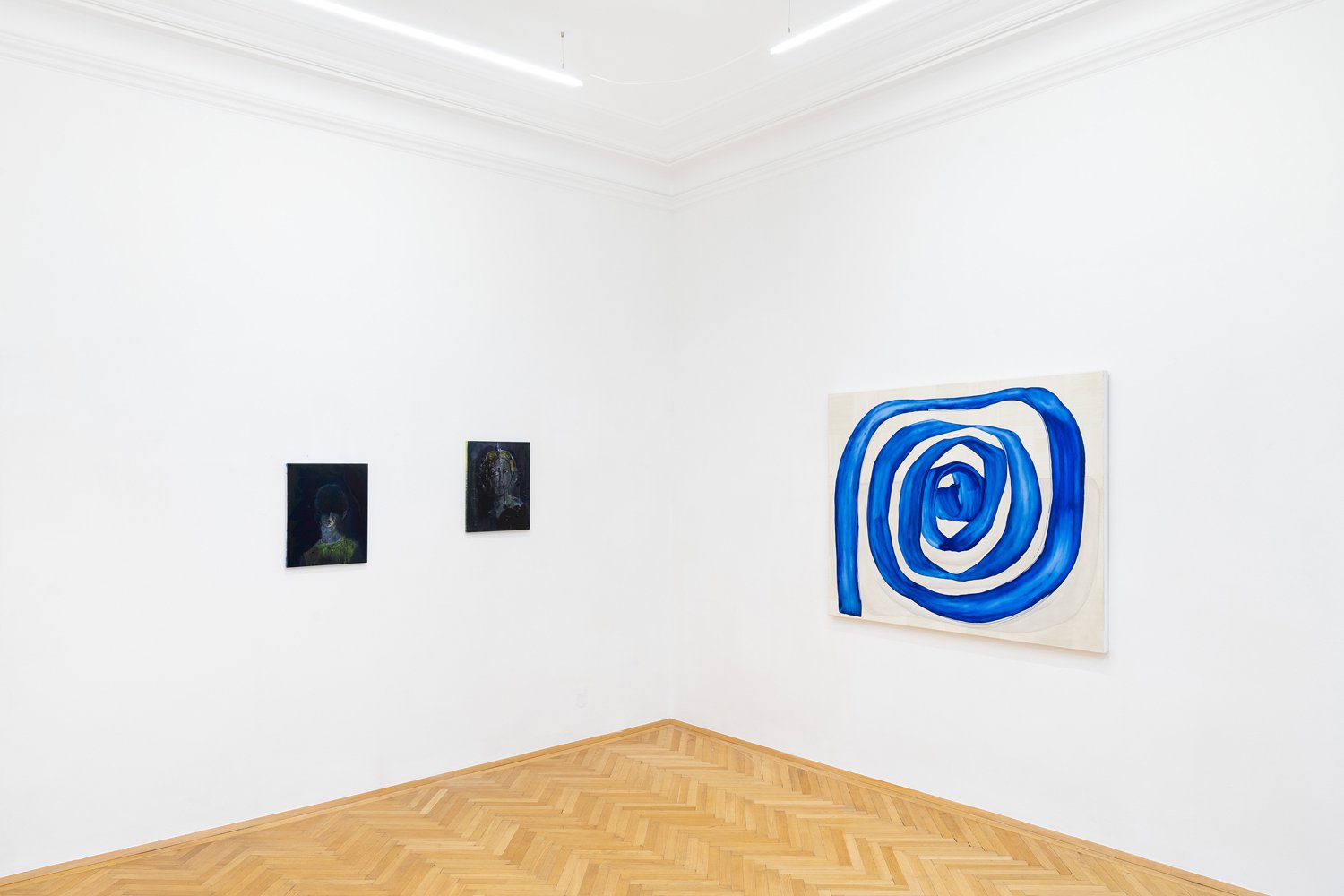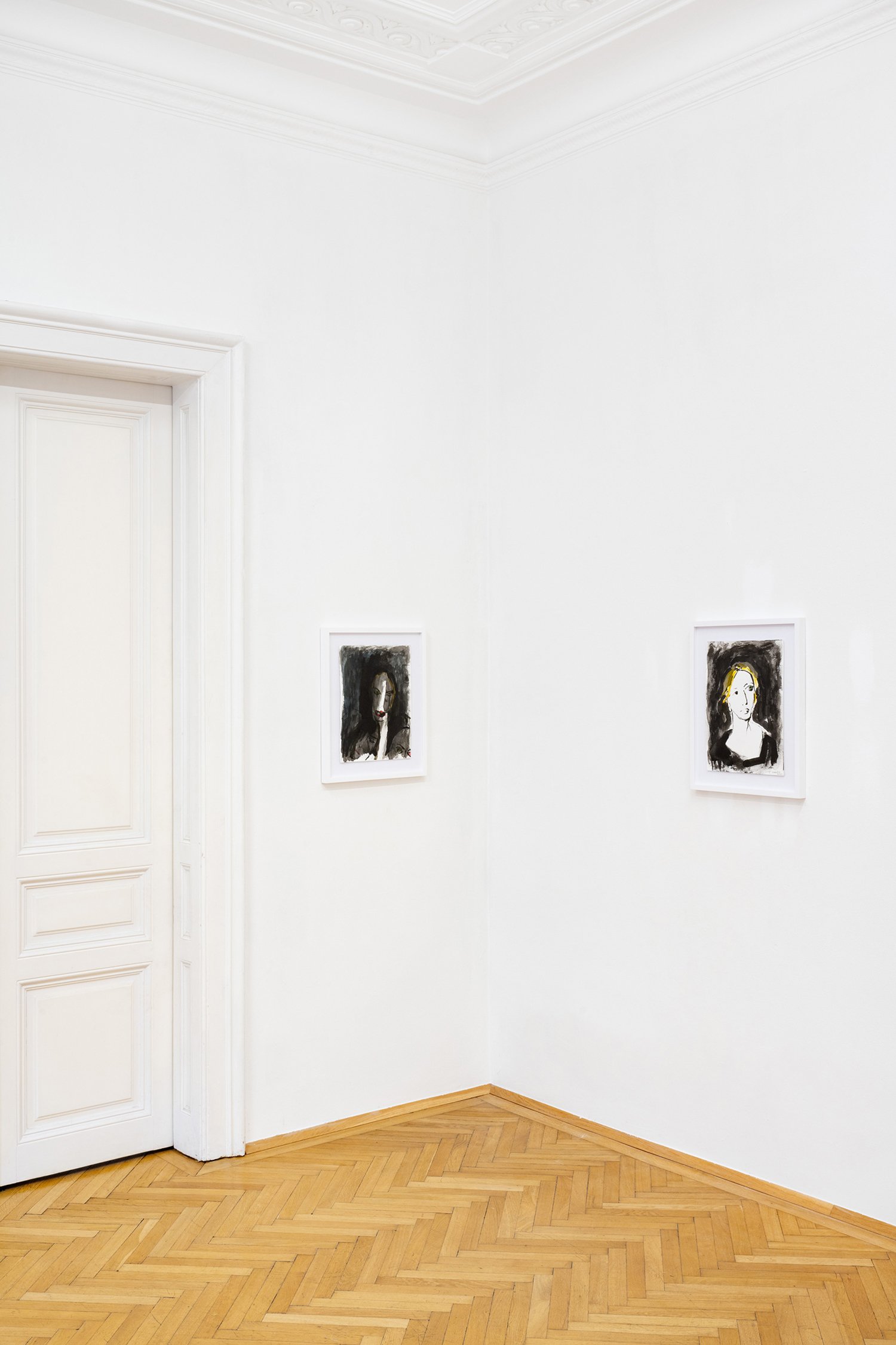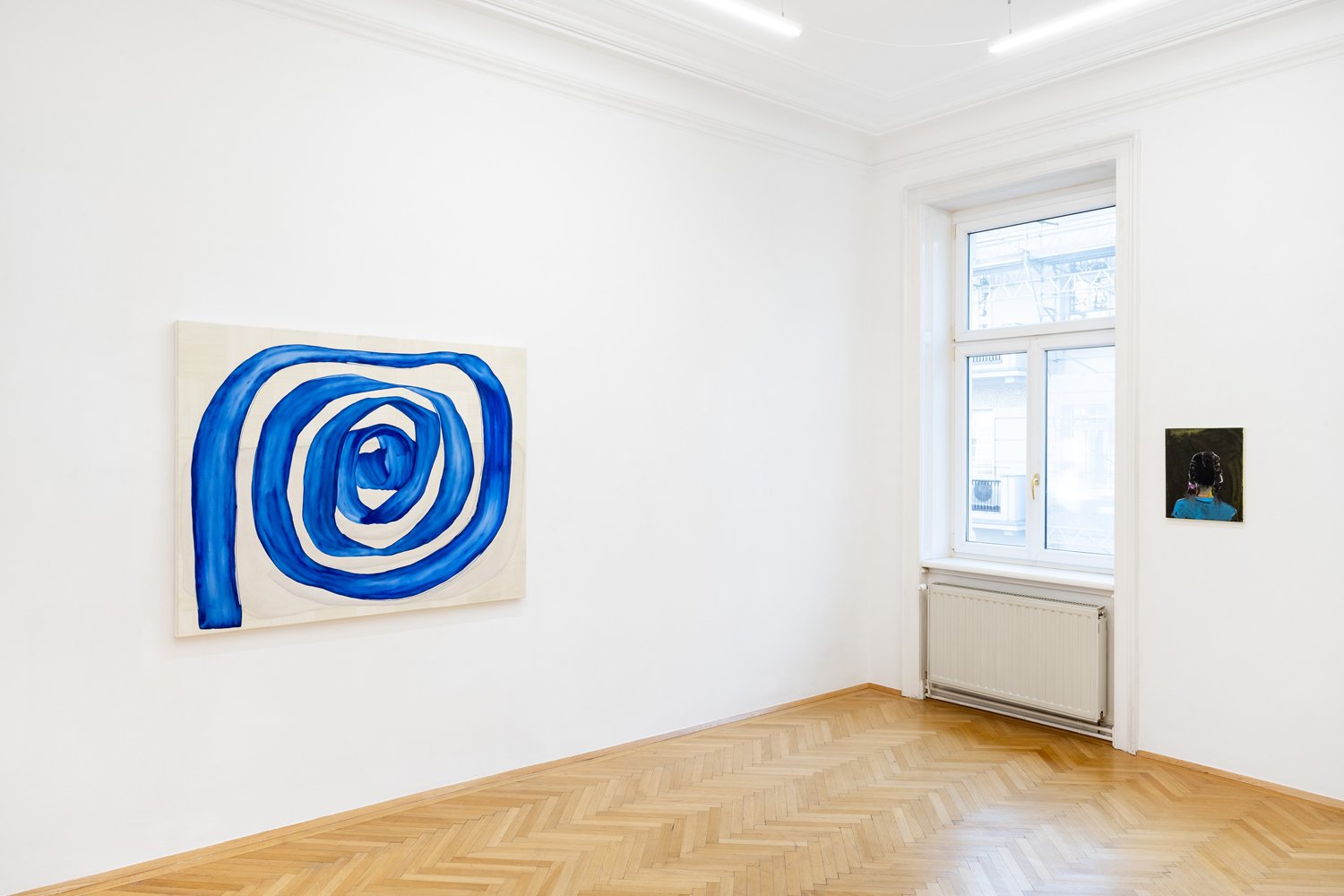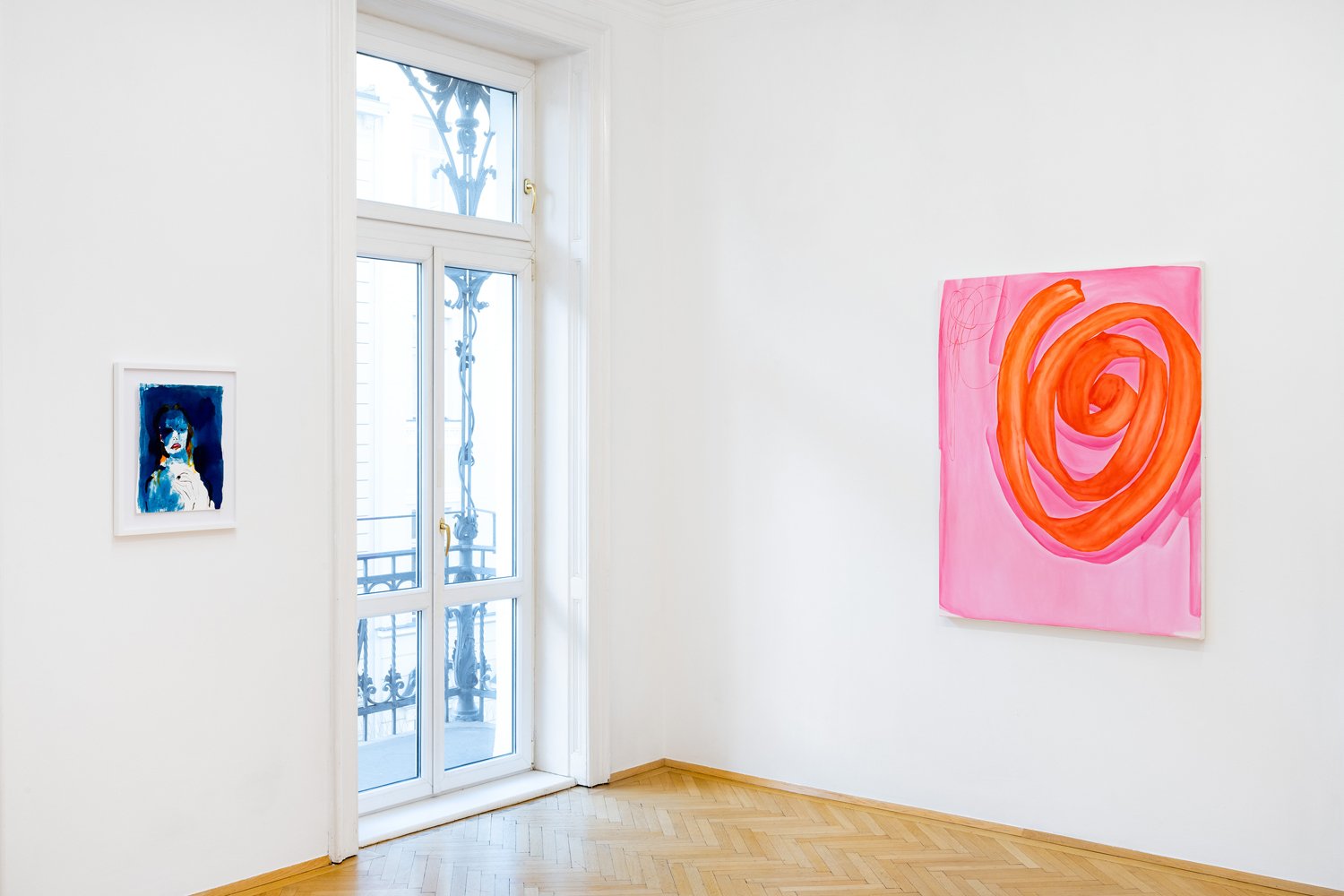SOFT TEETH HARD GAZE
Charlotte Klobassa & Panos Papadopoulos
OCT 26 – NOV 25, 2023
Soft teeth hard gaze. Of human essence and modern portraits.
Two divergent forms of a modern approach to the classical subject of the portrait open up surprising perspectives both in form and content in the double exhibition „Soft teeth hard gaze“ with works by Charlotte Klobassa and Panos Papadopoulos. They break open traditional schemes of our idea of human likenesses, present alternative concepts, and in the process raise numerous questions whose echoes reverberate in the paintings of the two artistic positions that at first glance seem so different. What constitutes our personality at its core? How can this human essence be depicted? How do external factors change our inner life and have an effect on our view of the world as well as on that of our counterpart?
In Panos Papadopoulos‘ portraits against a dark background, the altered perspective is evident in the fact that it is often deliberately obscured. A nearly black area covers the forehead and eye area of the young adult‘s face. Is it hair behind which the young person shyly hides, or is it a painterly metaphor for the increasing escapism of a generation growing up against the backdrop of increasingly frequent global crises? Here, the individual is not represented in the typical manner of a classical portrait but rather according to their emotional state. The idea of the face as a mirror of the soul is intensified here, with the inner self of the person being incorporated into the painterly composition. This emotionally charged form of portraiture is further heightened in the portrayal of the girl with braided hair. The figure averts her gaze from the viewer and looks into the darkness of an uncertain future. Her doubts and fears manifest in the tension between dynamism and restraint that permeates her form.
Darkness also envelops the portrait of the woman, whose depiction evokes reminiscences of motherly figures from the art historical canon. Thus, once again, it is not the specific image of a person but rather their emotional state that is the subject of the painting. This mother shares with her art historical counterparts the concern evident in her expressive gaze, intensified by the significantly larger right eye. Just as Mary gazes anxiously at the future of Christ, the gaze of this mother is filled with loving fear. Humanity transcends the centuries and alters our perspective, our era shaped by globalization and climate change leads to its increasing intensity.
This intensity is also found in the form of perceptive vision and its effects on the human psyche in the paintings of Charlotte Klobassa. Surprisingly, her images do not display abstract gestures. Instead, they are meticulously constructed reproductions of found and her own scribbles, unconscious doodles. The artist appropriates them by reproducing them on a large scale in oil on canvas. The result forms an equivalent to Papadopoulos‘ portraits. In Klobassa‘s work, just as in Papadopoulos‘, the inner self of the individual finds an external representation, with their emotional state becoming the subject of the image. The unconscious, which breaks through in the „portrayed“ doodles, tells more about the person than their conscious self, as it forms the basis on which consciousness can take root. Unfortunately, we rarely listen to it, and only nighttime teeth grinding is often an indication that more is at work within us, influencing our emotional state, than we care to admit. News consumed through the media, subjective worries, or fears are filtered and stored during wakefulness, only to be processed further at night or at dawn when consciousness slumbers. Klobassa subjects this uncontrollable aspect to an analysis in her portraits, painted with delicate brushstrokes, thereby removing its threatening potential and transforming it back into what it truly is: a part of human essence.
In Klobassa‘s and Papadopoulos‘ work, the portrait no longer serves as an impression of the external image of the individual but as an expression of their inner state. In the unusual formal dialogue that emerges between Papadopoulos‘ dark figurative paintings and Klobassa‘s bright, abstract-seeming works evidence that uncharted artistic paths lie open for the genre of portraiture. In the case of this exhibition, one thing is certain: these paths lead to images that do not merely show people but, on the contrary, allow us to feel them. The gaze of the two artists penetrates beneath the surface of their subjects, seeing what lies beneath and portraying it in their own unique ways. It is now up to us as viewers to return that gaze and not lose sight of the humanity displayed here.
Anne Simone Krüger
